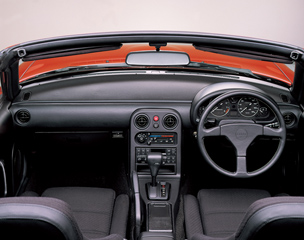Lightweight sports cars first appeared in the years following the Second World War, but it wasn’t until the 1960s that small, affordable and fun roadsters reached the height of their popularity. By fitting engines from standard sedans into compact and light vehicle bodies, automakers could provide exciting performance and agile handling that was also affordable. The lightweight sports car allowed average Europeans to enjoy exhilarating driving on a daily basis.
The 1970s saw the introduction of much stricter safety and emissions regulations in the US, the world’s largest automobile market. Since most of the lightweight sports cars were open top, they lacked the structural integrity provided by a roof. To meet the regulations, manufacturers instead added large shock absorbing bumpers or extra steel to increase body rigidity, which made the cars much heavier. In order to meet the new emissions regulations, many companies resorted to reducing the engine output. This was a tough period for the lightweight sports car, and as people’s expectations began to diminish, the roadsters disappeared from the market one after another.



